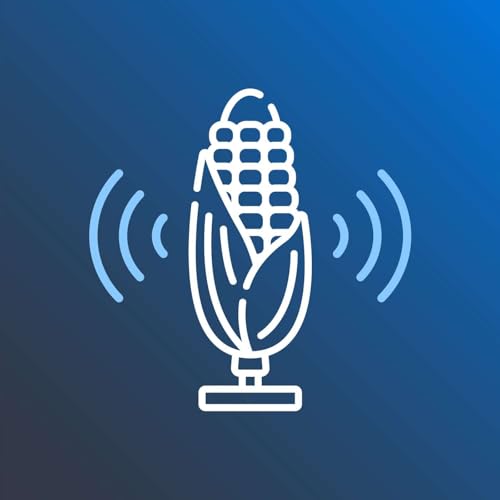In today's episode, the challenge and opportunity of hybrid wheat. We've discussed previously how much hybrid corn has increased corn yields over the past century. Wheat is an important crop around the world; but why haven't hybrids been commercialized in the same way? Today we take a look at how agriscience is changing the game for hybrid wheat. Corteva Agriscience is on the cusp of making hybrid wheat a commercial reality.
Global Wheat Lead for Corteva Agriscience Jessie Alt works with a team of field breeders to produce new varietal wheat that is suited for local conditions. Originally from a farm in southern Minnesota, Jessie spent the first part of her career as a soybean breeder. She joined the wheat team six years ago and says the challenge of bringing hybrid wheat to the market was a big part of what excited her about the opportunity.
“ I think hybrid wheat is the most exciting plant innovation that I have been involved with in my career…It's a hard problem to crack. I think it will really change farmer profitability with wheat. And it brings that next level of tech and innovation that I believe the wheat crop has been missing.” - Jessie Alt, Ph.D.
Brad Erker is the CEO of Colorado Wheat, which is an umbrella term used to describe three different wheat organizations that he manages in Colorado. The Colorado Wheat Administrative Committee, the Colorado Association of Wheat Growers, and the Colorado Wheat Research Foundation. Brad grew up on a wheat farm in eastern Colorado, but spent part of his early career in the Midwest as a corn breeder. He has been back focused on wheat full-time for the past 21 years.
“ If the technology does provide a value to the farmer, they will adopt it…But it definitely is a different scenario than in corn and soy. For one, it's grown in more marginal land. It's grown more out west, where the rainfall is much lower, the inputs are much lower. The mentality of the farmer, I think, is quite different when it comes to input costs in general, whether it be cost of seed or seed treatment or fertilizer rates or cost of equipment. All of those things I think are different in that wheat space than in the corn and soy space.” - Brad Erker
Some takeaways from this episode include:
- A completely novel approach to the wheat sterility problem of using color sorting technology to separate parent seed
- Any new commercial innovation is going to begin with return on investment (ROI), but it doesn’t end there. Risk mitigation is also very important, among other considerations
- Innovations like hybrid wheat are the result of convergence of years of research and development with large discoveries both inside and outside of agriculture. The wheat genome plus the ability to color sort at scale makes this process possible
Agriscience Explained is brought to you by Corteva Agriscience and hosted by Tim Hammerich. This show is produced by Clint Pilcher, Rayda Krell and Ann Leonard. Jaime Hammerich and Grant Bolton edit these podcasts, and the music was composed by Dmitri Volkov. Subscribe for more Agriscience Explained: From Science to Solutions.
 Sep 16 202529 min
Sep 16 202529 min Sep 2 202532 min
Sep 2 202532 min Aug 14 202536 min
Aug 14 202536 min 35 min
35 min 29 min
29 min Jun 26 202528 min
Jun 26 202528 min 26 min
26 min May 14 202529 min
May 14 202529 min
